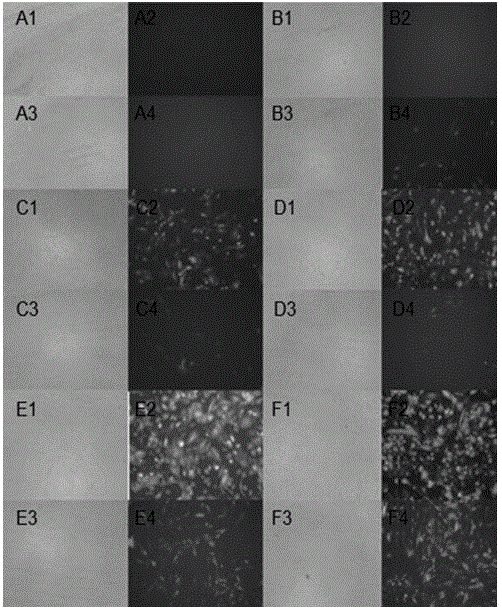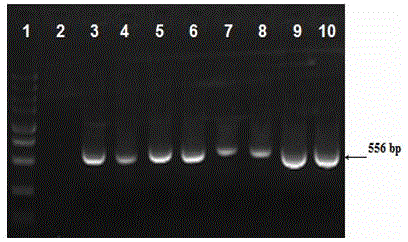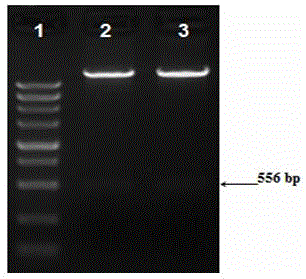Application of KAP26.1 gene as exogenous gene introduced into cashmere goat cells and used for improving wool fineness
A KAP26.1, exogenous gene technology, applied in the direction of plant gene improvement, application, genetic engineering, etc.
- Summary
- Abstract
- Description
- Claims
- Application Information
AI Technical Summary
Problems solved by technology
Method used
Image
Examples
Embodiment Construction
[0014] 1. Primary skin cell culture of Liaoning cashmere goat
[0015] (1) Select about 5cm from the buttocks of Liaoning cashmere goats 2 Use wool shears to cut off the long hair and velvet, disinfect with iodine, and then use 75% alcohol to remove the code, and cut about 0.5cm with a blade. 3 Immediately put tissue pieces of the same size into 75% alcohol, wash for 30s, rinse three times with saline containing 100U / ml double antibody, and finally put sheepskin tissue pieces into D-Hanks, seal with parafilm, and store at 4°C Save and bring back to the laboratory within 4 hours.
[0016] (2) Place the small piece of sheep skin in D-Hanks buffer, rinse it three times with D-Hanks solution, and then cut it into 1mm with ophthalmic scissors 3 Small tissue blocks left and right. Take small pieces of tissue and place them in the culture bottle and evenly distribute them at the bottom of the culture bottle. After the left and right sides are completed, the bottom of the bottle i...
PUM
 Login to View More
Login to View More Abstract
Description
Claims
Application Information
 Login to View More
Login to View More - R&D
- Intellectual Property
- Life Sciences
- Materials
- Tech Scout
- Unparalleled Data Quality
- Higher Quality Content
- 60% Fewer Hallucinations
Browse by: Latest US Patents, China's latest patents, Technical Efficacy Thesaurus, Application Domain, Technology Topic, Popular Technical Reports.
© 2025 PatSnap. All rights reserved.Legal|Privacy policy|Modern Slavery Act Transparency Statement|Sitemap|About US| Contact US: help@patsnap.com



